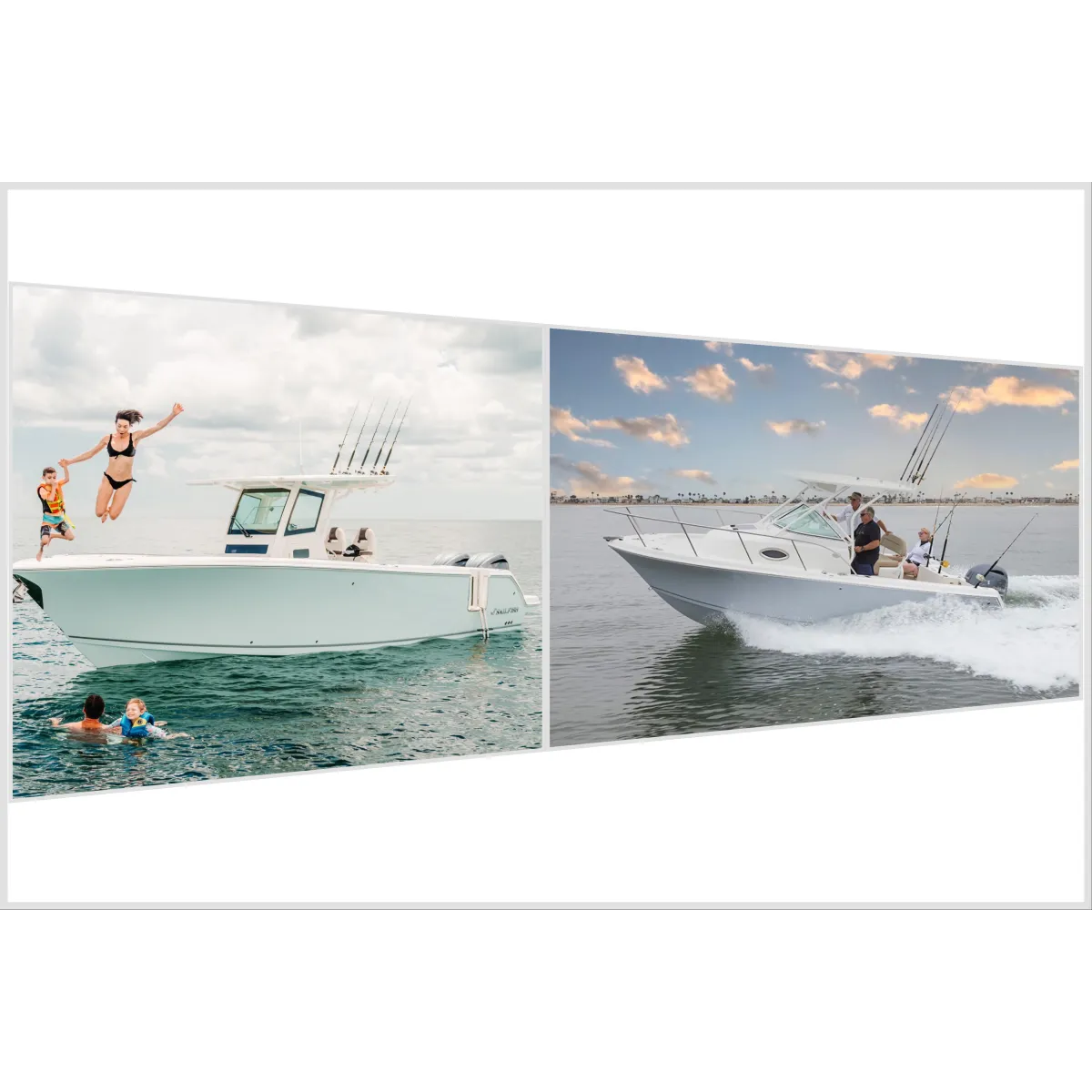
Are you a Center Console or a Dual Console Type?
Are you a Center- or a Dual-Console Type? Find the right fishing boat to fit your lifestyle
With so many choices on the market, it is important to understand the subtle differences between fishing boat model options, namely center and dual consoles. These models have seen a surge in popularity during the pandemic because they are the ultimate do-all vessels, catering to a spectrum of desires: cruising, watersports, social entertaining, offshore and inshore fishing and competitive angling.
Dual console and center console models meet the demands of both anglers and pleasure boaters, but one could be classified as a family-friendly fishing boat, and the other a fishing-friendly family boat. So what’s the difference?
There is a good bit of variation between dual- and center-console model layouts. A dual console, simply put, offers more family-style amenities. From the helm forward, a dual console is comparable to a cruiser. In fact, if a sterndrive engine were installed instead of an outboard, the dual console would be known as a bowrider, with comfort features as its primary selling points. Similar to a bowrider, a dual console bow hosts many guests comfortably. Guests can lounge, pop up a table and have a snack, or socialize. And let’s face it: the first thing kids and guests want to do when the lines are dropped is go up to the front for a great view. A dual console model accommodates them (and you) and is easy to easy to maneuver around on with a straight shot from the helm.
The helm of a dual console is usually equipped with a wraparound, walkthrough windshield. A lounge seat and/or open-air galley sits in the console spot across from the helm, where an enclosed head or undermount storage is installed. Many models offer an installed hard top. A built-on hardtop offers cabin-style protection from the elements but can also be a drawback due to the legs installed in the gunnel, which block walkaround access to the hull.
From the helm backward, because of its outboard placement, a dual console acts as a tournament-style fishing platform with wide decks, flip-up seating and wraparound access to rods and lines, similar to a center console. Cockpit livewells and a transom door with flip-out ladder round up the lifestyle options for a day on the water. The dual console layout definitely offers the best of both worlds, fishing and cruising, because of its hybrid versatility.
If fishing is a bigger priority to you than entertaining, a center console is the better choice. Center consoles offer a more accommodating setup for angling, with walkaround access to the water. The bow can transition easily to a casting deck and you should be able to move and fish virtually anywhere along the rail. There is typically an installed livewell under the forward helm seat.
A center console helm with a leaning post gives the captain the option to stand and have great visibility and comfort when riding to an offshore location. Flushmount GPS systems, VHF radios, compasses and other gauges can be amply installed on the console due to its large panel and space on top of the dash. Rocket launchers, livewells and removable countertops with tool storage are included on larger leaning posts to make a day of fishing extra productive. On smaller leaning posts, an undermount storage cooler is typically placed, with livewell/baitwells and swim-up coolers located on the transom. Some models also come equipped with a dive door.
Comfort features are easy to add onto a center console. Sailfish Boats, for example, offers a Comfort Package, which includes bow cushions, bolsters and forward-facing backrests, to make the bow as comfortable as a dual console. Ski tow bars are usually an option on both platforms for kids to get their thrills doing pulled watersports.
No matter the model you choose – center or dual console – you’ll get a lot for your investment on the water. Check the boat builder sections on each manufacturer’s website to compare options and fit out features. Don’t hold back: some features cross over nicely as you go up in size and, price points will vary. And of course, be sure to check the dealer invoice to compare with MSRP.